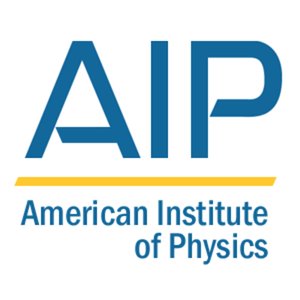
The American Institute of Physics (AIP) (www.aip.org) is pleased to report significant increases in the impact factors of many of its key titles, as reported in the 2010 Journal Citation Reports®(JCR) (Thomson Reuters 2011). Stand-out performances include a 34.6% jump by Biomicrofluidics,a more than 15% increase by Chaos, and impressive gains for Applied Physics Letters, Physics of Fluids,Review of Scientific Instruments, Journal of Physical and Chemical Reference Data, and Journal of Laser Applications.
The outstanding performance of AIP journals in 2010 means they maintain their place among the most highly cited journals in their categories. Led by Applied Physics Letters (APL) and Journal of Applied Physics(JAP), AIP ranked first overall in applied physics citations. Its total of four titles garnered more than a third of all cited references among the 116 journals in the category, while representing just 4% of the titles indexed.
“I am deeply gratified to see the great strides taken by many of our core journals in 2010, as clearly evidenced by the increases in their impact factors,” said AIP Vice President, Publishing, John Haynes. “The JCR data highlight the great value and service AIP journals provide to the community through the large volume of articles we publish. In applied physics alone, APL and JAP published more than 8,300 articles in 2010—more than the next five journals combined.”
AIP is also proud to announce the JCR data for a number of its other highly respected publications:
- Applied Physics Letters saw an increase in its impact factor of 7.5%. Of the 365 physics journals in the JCR, APL was the third most highly cited, with a total of nearly 200,000 citations.
- Biomicrofluidics saw a 34.6% jump in impact factor to 3.896, placing it solidly at number two in the Physics, Fluids & Plasmas category. This young journal has risen steadily through the ranks since it was first included in the 2008 JCR.
- Chaos experienced a rise of 15.9% in its impact factor, going from 1.795 to 2.081.
- The Journal of Chemical Physics (JCP) remains the most highly cited of the 32 journals in the Atomic, Molecular, and Chemical Physics category, with more than twice the number of citations of the next two journals combined. Of all 365 physics journals in the JCR, JCP was the fourth most highly cited, with a total of more than 165,000 citations.
- Journal of Laser Applications increased its impact factor by 6.4%.
- Journal of Mathematical Physics enjoyed an 18.3% increase in its immediacy index and, as it has for many years, posted a half-life of >10 years. It remains among the top five cited journals in Mathematical Physics.
- Journal of Physical and Chemical Reference Data saw a more than 50% increase in its impact factor.
- Physics of Fluids is the third most highly cited journal in both the Physics, Fluids & Plasmas and Mechanics categories. The journal reported a 5.1% jump in its impact factor.
- Physics of Plasmas was again the most highly cited journal dedicated entirely to plasma physics. It also retains a top ten spot in the Physics, Fluids & Plasmas category when ranked by both impact factor and total citations.
- Physics Today, AIP’s flagship magazine, saw a rise in its immediacy index of more than 125% illustrating its relevance and value by how quickly articles are cited.
- Review of Scientific Instruments is the second most highly cited of the 61 journals in Instruments & Instrumentation.
“It is clear that an extraordinary number of scientists are citing our articles and using the work reported in AIP journals as a foundation for their own research,” said AIP Publisher, Mark Cassar. “Given that many of the top researchers in these fields are our journals’ editors, editorial board members, authors and referees, it’s not surprising that our citation rankings continue to climb. I thank these talented scientists for their support.”



























